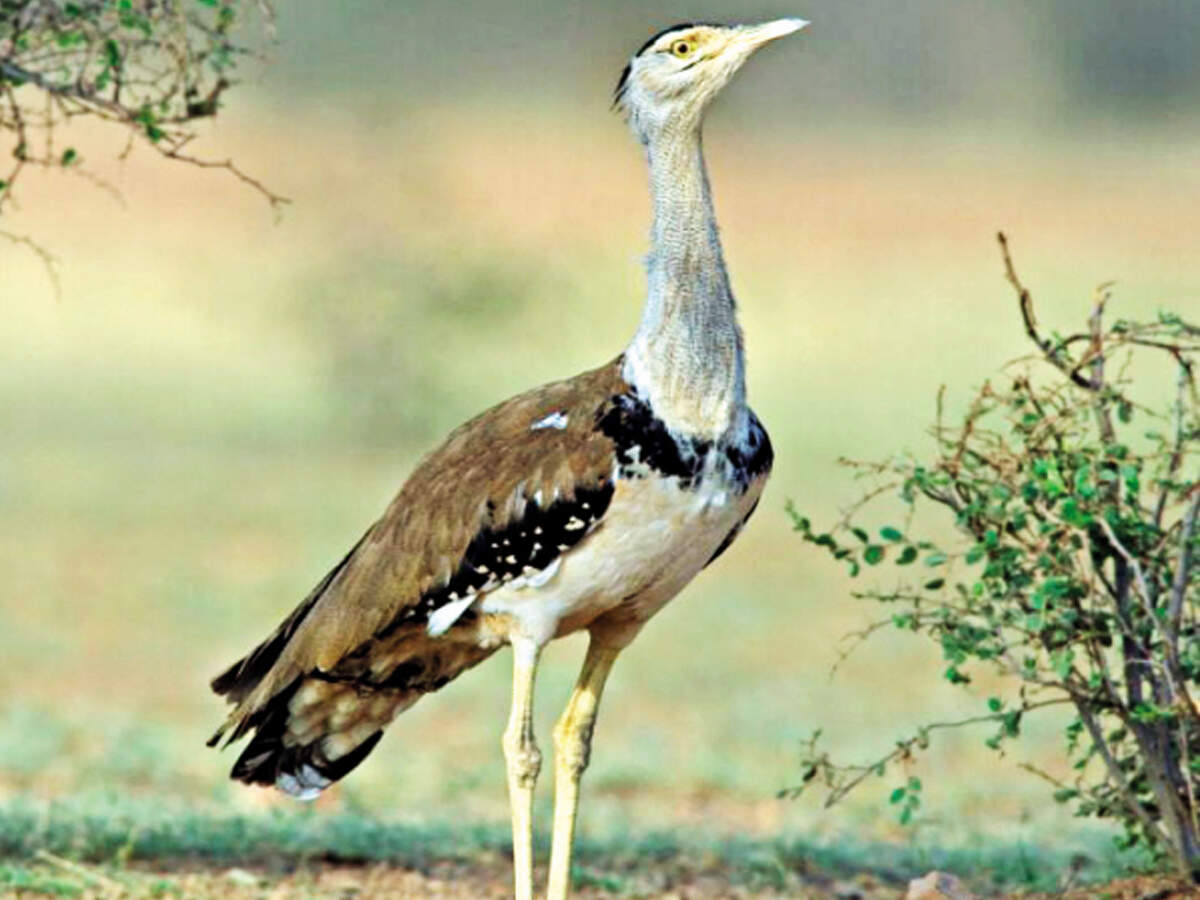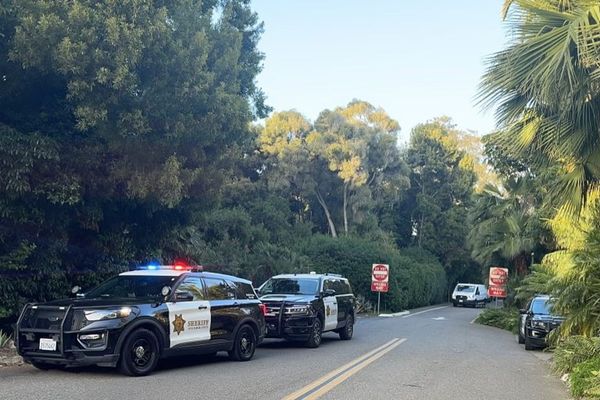
AHMEDABAD: The Great Indian Bustard (GIB), which was the mascot ‘Gibi’ for a UN-backed conservation conference in Gandhinagar, seems to have vanished from its Kutch sanctuary.
At least that appeared to be the case on January 1, 2021, when not a single GIB was spotted in the sanctuary. This information was given by Union minister of state for environment, forest and climate change Ashwini Kumar Choubey on Monday.
The minister was replying to a question from Congress MP Shaktisinh Gohil on the GIB population in the sanctuary and the number of deaths caused by power lines and windmills in the area. Gohil also inquired about the steps being taken by the government to prevent the deaths. Choubey said that the questions did not arise as the birds were not present in the sanctuary.
The Kutch GIB sanctuary, spread over 2 sq km, has often been hailed as one of the finest habitats for the critically endangered species.
Gibi was the mascot for the 13th Conference of Parties (COP) to the Convention on the Conservation of Migratory Species of Wild Animals (CMS), in Gandhinagar in February 2019.
The CMS is an environmental treaty agreed under the aegis of the United Nations Environment Programme. The Government of India had moved a proposal in February 2019 at the COP-CMS convention in Gujarat for the inclusion of GIBs in Appendix 1. Once this is done, CMS parties, which include more than 124 countries, will strive to protect the species. This covers actions such as conserving or restoring the places where they live, mitigating obstacles to migration, and controlling other factors that might endanger them.
Four female GIBs regularly sighted in Kutch
Some wildlife experts said that the Union minister’s statement on missing GIBs was a matter of interpretation of data. Others said that it was an attempt by the government to put to rest the issue of taking overhead power cables underground in line with a recent Supreme Court directive to ensure GIBs’ safety.
“Four female GIBs are regularly sighted in Kutch. Also, the area is home to about 20 lesser floricans that are sighted regularly,” said Anita Karn, chief conservator of forests, Kutch (wildlife) circle. “It is a part of the Central Asian Flyway route of migration and a large number of migratory species are sighted here during winters.”
While the Kutch bustard sanctuary is spread over 2 sq km, the GIB habitat in Kutch sprawls across 2,000 sq km. The four females have often been spotted in the range of 20-70km from the sanctuary area, said sources.
The GIB is a critically endangered bird with its last viable breeding population in India. About 100 of these magnificent grassland birds remain in the world. Though habitat loss and degradation have been responsible for this bird’s decline in the past few decades, their deaths due to collision with overhead power lines are today the biggest direct threat.
During the 14th meeting of the State Board for Wildlife in February 2019, Gujarat chief minister Vijay Rupani had said that irrespective of the costs, parties concerned must lay the power lines underground.
On April 19, a Supreme Court order directed that power lines be taken underground. The order makes it mandatory for all power lines in both the ‘potential’ and ‘priority’ habitats of GIBs to be laid underground in the future.
“Despite the assurance by the Gujarat chief minister, not a single power line has been taken underground in Kutch,” said Devesh Gadhvi, bustard specialist group member, International Union for Conservation of Nature. Gadhvi is also a member of the Supreme Court-appointed committee for determining the feasibility of taking transmission lines underground. The Wildlife Institute of India estimates that 18 GIBs die each year due to collision with power lines.
GIBs need grasslands and semi-arid areas to survive. According to the last census of GIBs in Gujarat, in 2016 there were 25 in the wild, a rapid decline from 2007 when 48 were recorded.







